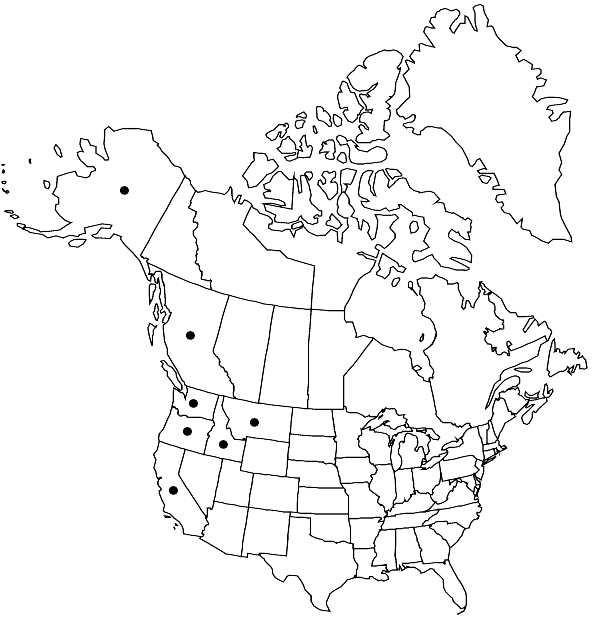Sphagnum mendocinum
Icon. Musc., suppl.: 12. 1874,.
Plants moderately robust and lax; terminal bud somewhat enlarged; yellow-green to light brownish green. Stems yellow-green; superficial cortex of 1–2 layers of moderately enlarged cells. Stem leaves broadly oblong-triangular, 1.2–1.5 mm; mostly appressed to stem; apex obtuse; hyaline cells narrow, usually nonseptate, efibrillose and aporose on convex surface near apex, on concave surface usually efibrillose with irregular pores along commissures in distal portion of leaf. Branches with loosely imbricate leaves; often 5-ranked; leaves little to somewhat elongated at distal end. Branch fascicles with 2 spreading and 2–3 pendent branches. Branch stems green, with cortical cells in 1 layer with conspicuous necks. Branch leaves ovate, ovate-lanceolate to lanceolate; 2–3.5 mm; flat and undulate at margins and recurved at apex when dry; straight; margins entire; hyaline cells on concave surface with very numerous, small ringed or unringed pores along the commissures, 5–12 in distal portion of leaf and 20–27 in proximal portion, convex surface with 5–15 pores per cell in distal portion of leaf and 14–21 in proximal portion, pores usually without a ring; chlorophyllous cells triangular to trapezoidal in transverse section and exposed slightly on concave surface. Sexual condition dioicous. Spores ca. 30 µm; very slightly roughened.
Habitat: Submerged or floating in weakly minerotrophic wet depressions of alder swamps, coniferous swamps, Spiraea thickets, sedge fens, raised bogs, and drainage ditches in mires
Elevation: low to moderate elevations
Distribution

B.C., Alaska, Calif., Idaho, Mont., Oreg., Wash.
Discussion
Sporophytes of Sphagnum mendocinum are uncommon. Although the unique branch leaf porosity makes it unmistakable microscopically, it may be confused with other species in the field. It is unusual ecologically in that it seems to overlap both the carpet- and lawn-forming habits—in other words it seems intermediate between S. recurvum and S. cuspidatum, in the broad sense. Among the species that it overlaps floristically, it is more robust and darker colored than S. pacificum. The latter also has an apiculate stem leaf compared to the more or less obtuse stem leaves of S. mendocinum. The more wet-growing S. majus var. majus and S. majus var. norvegicum, with which it slightly overlaps in habitat, have branch leaves that are strongly elongated at the distal branch ends whereas those of S. mendocinum are not. See also discussion under 40. S. obtusum. Sexual condition and spore characters are taken from from H. A. Crum (1984).
Selected References
None.